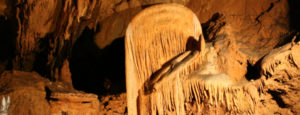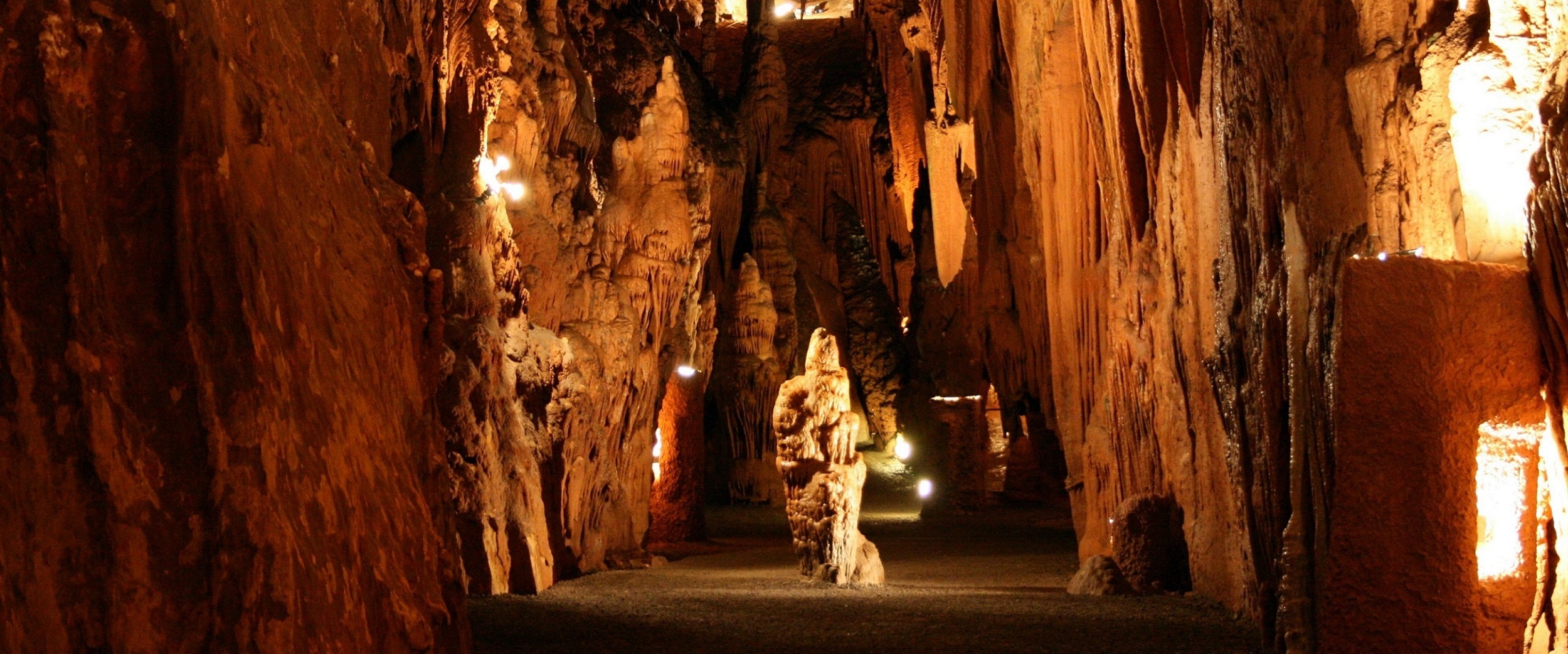Grand Caverns in Grottoes, about a half-hour’s drive south of Harrisonburg, is yet another spectacular subterranean experience in the Shenandoah Valley. With underground temperatures a near-constant mid-50s, the cave is a blessing for a family trip on an August vacation.
Grand Caverns were discovered in 1804 by a young trapper named Bernard Weyer. Some say he was digging for a lost groundhog trap. He gave the find his own name and two years later, opened it to visitors, making Weyer’s Cave the first commercially shown caverns in the U.S. Although the site has operated under different names and different owners, it is the oldest continually operating show cave in the country.
The National Park Service designated the cave a National Natural Landmark in 1973 in recognition of its shield formations and other features, such as flowstone, stalactites, and stalagmites.
The formation of the Caverns occurred in a process that took millions of years. As surface water dripped down through weak, soluble limestone, underground streams slowly developed and carved out channels of considerable size. When the water table lowered, the streams disappeared and large underground caverns were left.
A couple of geologic phenomena make Grand Caverns stand apart from other caves in the Valley:
 Vertical bedding – the caves of the Shenandoah Valley were formed in mostly horizontal limestone layers. At Grand Caverns the layers are vertical, turned on end by powerful tectonic forces.
Vertical bedding – the caves of the Shenandoah Valley were formed in mostly horizontal limestone layers. At Grand Caverns the layers are vertical, turned on end by powerful tectonic forces.
Cave Shield Formations – Grand Caverns is known for its abundance of “shield formations,” though it is unknown exactly how these shields are formed. One theory is that as water is forced out of cracks in the cave wall, calcite crystallizes and a plate begins to grow. There are many other theories.
“We here at Grand Caverns try to provide a unique cavern experience, while maintaining the standard for Shenandoah Valley hospitality,” said Nathan Garrison, Tourism and Park Director for the Town of Grottoes. “We absolutely love showcasing our cave. Recently we reopened our sister cave, Fountain Cave, where we take you on an Adventure Tour. These tours take about two hours to complete and let you explore and experience caverns how they originally were toured. You will definitely get dirty!”
“Also,” Garrison continued, “here at Grand Caverns, we will be hosting our annual Bluegrass in the Park Festival in September. Plus the grounds at Grand Caverns have a variety of things to do–a swimming pool, 18 hole Mini-Golf Course, walking and biking trails, hiking trails, and fishing on the scenic South River. Of course, we are extremely close to Shenandoah National Park.”
Guided tours are a mile and a half. Fees are $20 per adult and $11 for children, but many discounts are offered, too.
Weddings and ballroom dances have been held in the Caverns over the years. And during the Civil War the cave was visited by both Union and Confederate soldiers—over 200 of whom scrawled their names on the cave walls. Battle activity around the Caverns area was significant. Over two days of fighting in 1862, more than 3,000 men lost their lives within five miles of the cave.
Grand Caverns also hosts the annual Fall Festival Living History Day the first Saturday in October, with living history exhibits and demonstrations. The day also offers an authentic ball in the Grand Ballroom in the evening. Daytime activities are free to the public and fees do apply for the Grand Ball.
The nearby town of Grottoes is rich in Shenandoah Valley history—it was settled about 1735. Today, you can sit in on Friday night bluegrass concerts at Mountain View Park most of the summer.
Learn more about the Grand Caverns experience.





